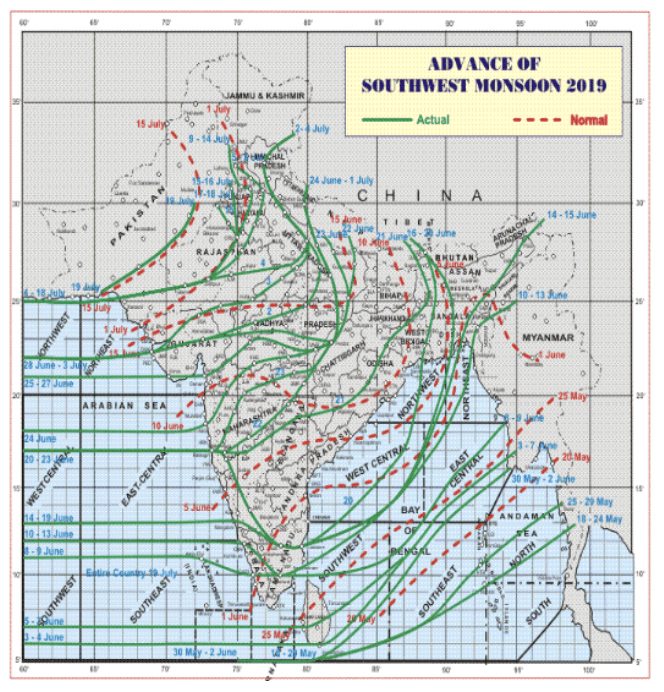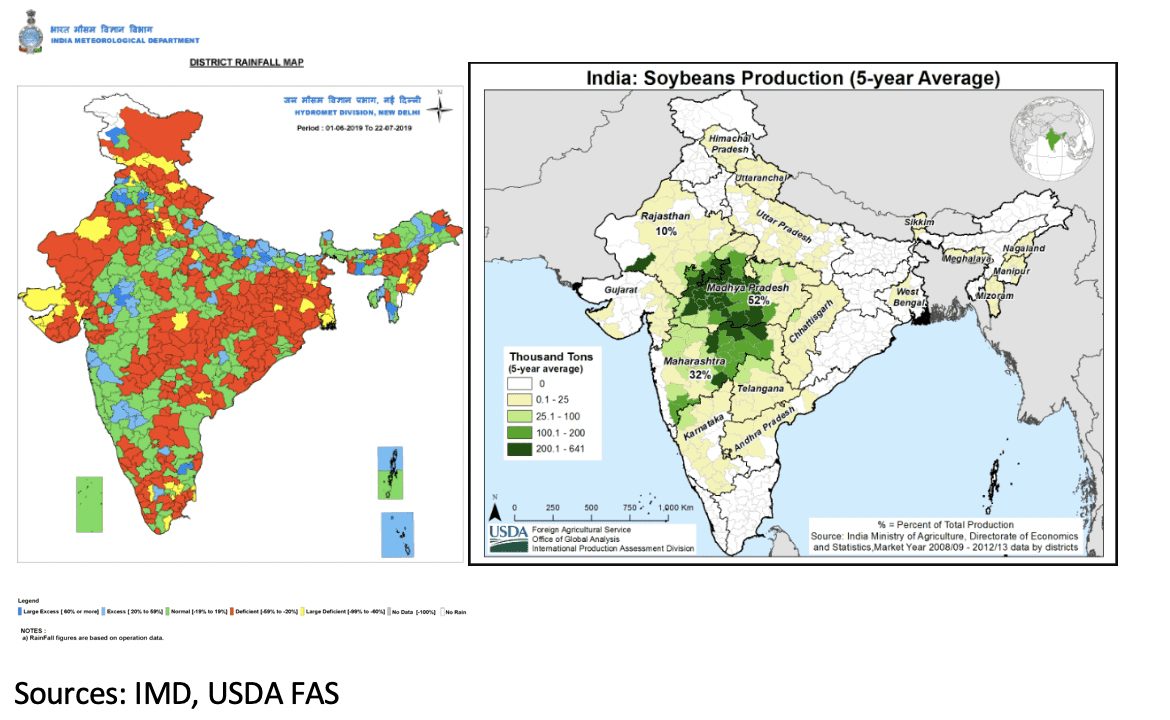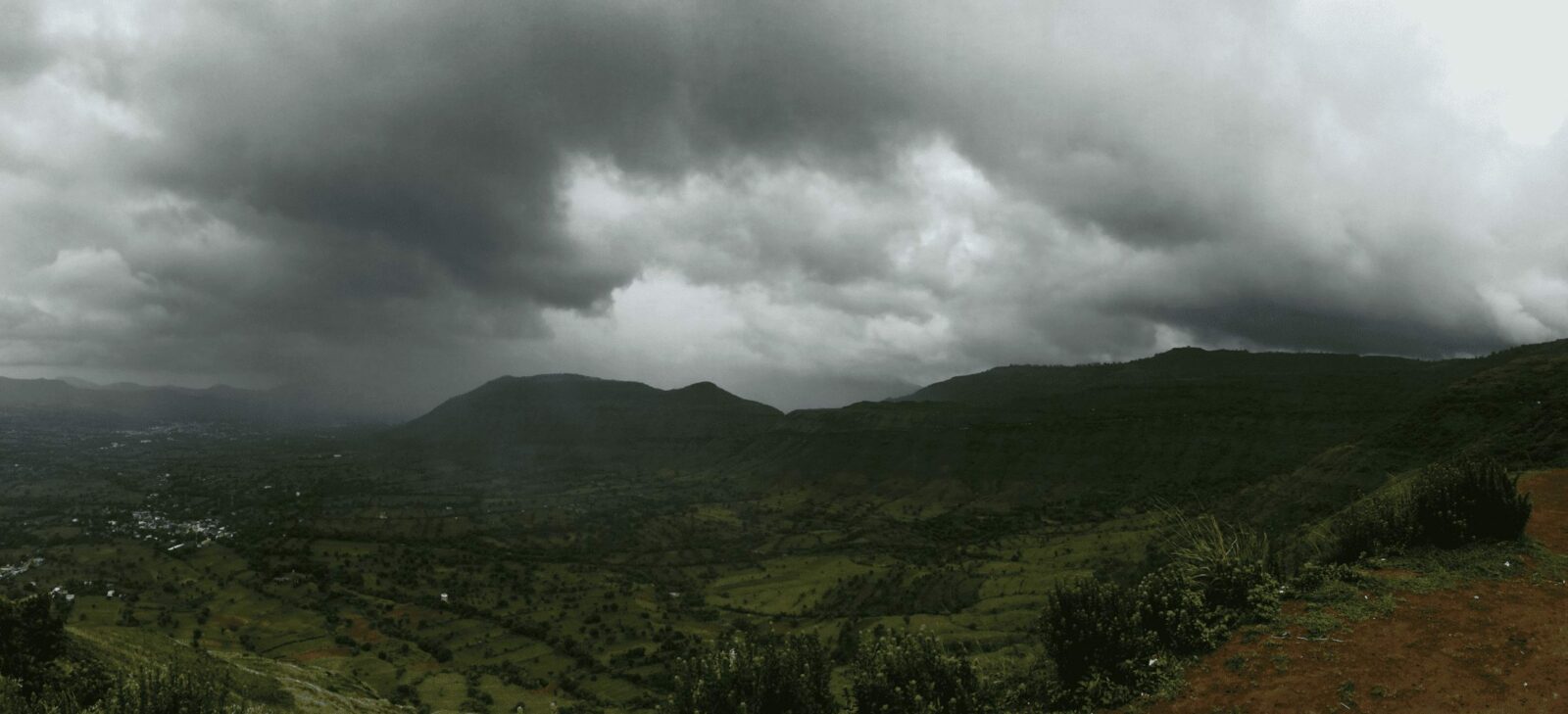Earlier this summer, we had highlighted what was a poor beginning to India’s annual Southwest Monsoon season. As a reminder, India’s Meteorological Department (IMD) tracks the seasonal progress of moisture as it advances in general from the southeast to northwest before typically reaching Pakistan by mid-July and bringing with it important seasonal rains that tend to persist through September that are essential for crop development and irrigation throughout the Kharif (monsoon-planted) growing season. Kharif-season crops include vital oilseed production for the domestic markets including soybeans and groundnuts (peanuts).
According to the latest release from the IMD, this year’s monsoon reached the Pakistan-Indian border on Friday, July 19. This was just four days behind the previous 50-year average pace used to mark the front’s normal progression. Tracking the green line in the map below, we can see that this year’s monsoon reached the key soybean production state of Madhya Pradesh by late June and advanced to the northwest into Rajasthan by the first week of July. Harkening back to our previous update, the U.S. Department of Agriculture’s (USDA) Foreign Agricultural Service (FAS) indicated that 52 percent of India’s soybean output between 2008/09 and 2012/13 was produced in Madhya Pradesh, while Maharashtra to the south produced 32 percent of the country’s soybeans over the same period.

According to the IMD and as of July 17, this year’s monsoon has fallen 16 percent below the previous 50-year average of 318.4 millimeters (mm) for the country as a whole. IMD also calculates that since the beginning of June, 18 percent of the county was facing a cumulative rainfall deficiency, compared with 12 percent last year, the highest level since a 20 percent was deficiency in mid-July 2014. The following map shows cumulative precipitation by district from June 1 through July 22. For reference, the blue regions have received an excess of 20 to 60 percent or more of normal precipitation, green districts have received +/-19 percent of normal precipitation while the red and yellow districts have received -20 to -99 percent of normal rainfall. When comparing this rainfall map next to the FAS soybean production map, we can see that there is a mixture of all categories within major Indian soybean-producing regions thus far.

As we had highlighted previously, the Indian government has several barriers in place to prevent the importation of foreign oilseeds, instead preferring to supplement domestic processing via the importation of oilseed products. A shortfall in output would likely spur increased foreign crush rates rather than provide material improvements in the shipments of oilseeds. Thus, India’s demand for palm oil and South American soybean oil are to be watched in the coming months, should India’s 2019 Southwest Monsoon result in valuable precipitation falling short of normal levels.
